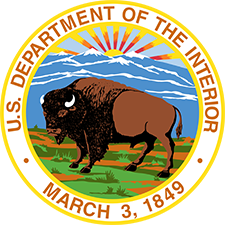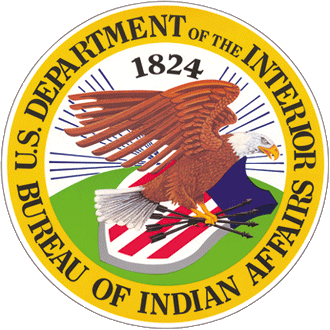Interagency hotshot crews, also known as Type 1 hand crews or, simply, hotshot crews, are teams of the most experienced, fit, and highly trained wildland firefighters that respond to the hottest and most complex parts of wildfires.
Interagency Hotshot Crews
Interagency hotshot crews (IHCs), also known as Type 1 hand crews, are teams of 18-25 firefighters that respond to fire incidents by working and camping near the frontlines of active wildfires, and by coordinating closely with firefighting aircraft and engine crews. Hotshot crews have more stringent requirements for fitness level, firefighting experience, and skill and leadership qualifications than Type 2 and Type 2 Initial Attack hand crews. They are considered elite among wildland firefighters due to their extensive training, high physical standards and ability to undertake difficult assignments.
A hotshot crew's primary mission is to provide a safe, organized, mobile, and highly skilled hand crew for all phases of wildland fire operations. The arduous duties and specialized assignments given to IHC personnel require staffing, certification, training, equipment, communications, transportation, organization, and qualifications that are uniform and adhered to by all IHCs.
Hotshot crews are specially trained in wildland fire suppression tactics, providing an organized, mobile, and skilled workforce for all phases of wildland fire management. They also have the leadership qualifications to break up into small groups, known as squads, to work on different tasks simultaneously. Outside of active fire incidents, IHCs train together as a team 40 hours a week during fire season.
There are 90 IHCs representing the five federal firefighting agencies: Bureau of Indian Affairs, Bureau of Lands Management, U.S. Fish and Wildlife, National Park Service and the U.S. Forest Service. The U.S. Forest Service has 68 crews and the agencies within the Department of Interior have a total of 22 crews. As a highly skilled interagency crew, an IHC responds to wildfire not only within their own region but are expected to respond to wildfires anywhere in the United States depending on national wildfire response priorities.
A Day in the Life
IHCs are highly-qualified crews that rely on years of experience, training, qualifications, and mental and physical strength. IHCs undergo annual reviews to maintain their Type 1 Interagency Hotshot Crew certification. Crewmembers train continually both in formal classroom settings and in the field (competing 80 hours of critical training each year). IHCs also start every year performing daily rigorous physical conditioning as a crew. Each day includes preparation, inspection, and maintenance of equipment and knowledge.
Once certified, IHCs continue daily physical conditioning to maintain and improve their physical capability. Each day crewmembers are briefed on national/geographic/local level fire activity, fire weather, fire potential, safety messages, and daily instructions. After briefings IHCs ensure that all equipment for fire response are fully maintained, prepared, and ready for immediate response. IHCs also often participate in local unit projects and activities while being ready for immediate response to initial attack for large fire response anywhere in the country.
Once ordered and responding to an incident, IHCs travel in specialty vehicles across the country (or at times fly). IHCs see many miles, and crewmembers will visit many parts of the country, travel internationally, and have great opportunities to see amazing environments. As IHCs, many operate not only as a crew, but pridefully as a family—a highly capable family.
IHCs are usually assigned to incidents for 14-21 days consecutively, working up to 16 hours a day. During this time, IHCs may camp at an incident command post, spike camp at designated areas in woods, or even a coyote camp very near the fire line. IHCs perform activities that demand high experience and capability to construct fire line, conduct firing operations, and plan tactical operations on the most complex and most active parts of incidents.
Once released from an Incident, crewmembers travel home, refurbish equipment, take mandatory days off (normally 2-3), and are then back on duty and available for the next assignment. Generally, IHCs are assigned back-to-back after mandatory days off due to the high demand for these highly-experienced and capable crews.
At the end of fire season, in late summer or fall, IHCs will refurbish equipment, prepare equipment and vehicles for winter storage, turn in their gear, conduct after action reviews, and disband for the wintertime. IHCs are like families, and most crewmembers remain nearby over the winter building strong relationships.
Bureau of Indian Affairs Hotshot Crews
The first Native American firefighting crews date back to the 1930s during the era of the New Deal. During that time, the newly created Indian Division of the Citizen Conservation Corps (ID-CCC), also known as the Indian Emergency Conservation Work (IECW) program, employed tens of thousands of Native American and Alaska Native workers, some of whom would learn firefighting as part of the corps’ forestry efforts on Tribal lands.
In 1982, the Fort Apache crew at the White Mountain Apache Reservation would become the first fully certified Native American IHC. Today, Fort Apache is one of seven IHCs proudly supported by the BIA, each hosted by a different Tribal community.
Learn more about each of the seven IHCs by following the links below:
- Chief Mountain IHC - Blackfeet Indian Reservation; Browning, MT
- Fort Apache IHC - White Mountain Apache Reservation; Whiteriver, AZ**
- Geronimo IHC - San Carlos Apache Reservation; San Carlos, AZ
- Golden Eagles IHC - Sycuan Indian Reservation; El Cajon, CA
- Navajo IHC – Navajo Indian Reservation; Fort Defiance, AZ**
- Warm Springs IHC - Warm Springs Indian Reservation; Warm Springs, OR
- Zuni IHC - Zuni Indian Reservation; Zuni, NM**
**The BIA manages the Navajo, Fort Apache, and Zuni IHCs. The remaining IHCs are managed by their host Tribe.
Additional Information
Related Pages
- Wildfire Response
- Hand Crews
- National Aviation Office
- Chief Mountain IHC
- Fort Apache IHC
- Geronimo IHC
- Golden Eagles IHC
- Navajo IHC
- Warm Springs IHC
- Zuni IHC
- National Interagency Fire Center
- National Wildfire Coordinating Group
- PDF: Interagency Standards "Firefighter Training & Qualifications"
- PDF: “Hotshot Crew History in America”
Contact Us
Boise, ID 83705


